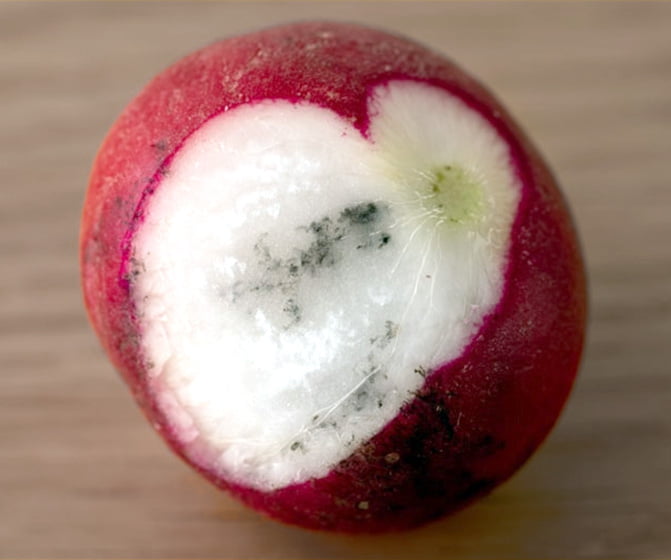So you’re in the mood for some fresh radishes, but before you take a bite, you want to make sure they’re still good to eat. It’s an all too common dilemma – we’ve all had our fair share of wilted veggies in the fridge. But fear not, because in this article, we’re going to give you some simple yet effective tips on how to tell if radishes are bad. Whether you’re a seasoned radish enthusiast or just starting your culinary journey, these tricks will ensure that you never encounter a spoiled radish again. So next time you’re standing in the produce aisle, unsure of which radishes to pick, keep reading to become a radish expert!
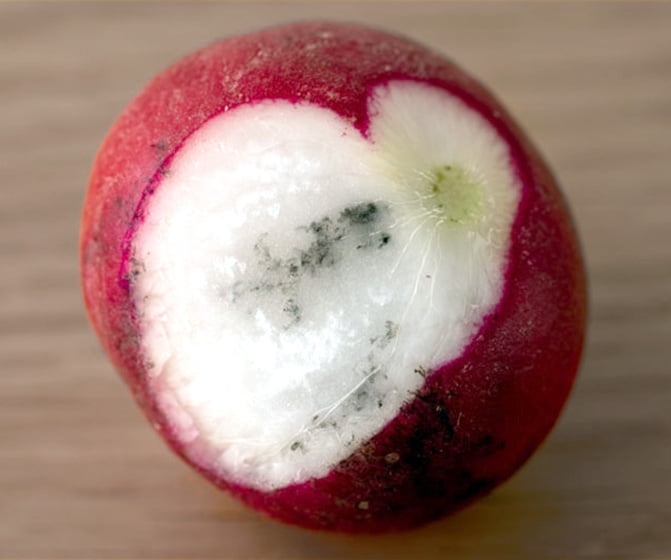
Appearance
When it comes to inspecting radishes, visual inspection plays a crucial role in determining their quality. Start by examining the overall appearance of the radishes. Look for any signs of bruising or spots, as these could be an indication of decay or damage. Radishes should have a firm and plump appearance, with a smooth surface. If you notice any wrinkles or shriveling, it might be a sign that the radishes are past their prime.
Visual Inspection
Take a closer look at the radishes to ensure they meet your standards. The skin of the radishes should be vibrant in color and free from any blemishes or discoloration. Ideally, they should have a vibrant and healthy red hue. If you come across any radishes with a pale or dull appearance, it could be a sign of spoilage. Additionally, inspect the leaves attached to the radish. Fresh and crisp leaves are a good sign, but wilted or yellowing leaves may indicate the radishes are no longer fresh.
Texture
Apart from appearance, texture also plays a crucial role in determining the quality of radishes. To feel the texture, gently squeeze the radishes. They should feel firm and have a consistent density throughout. Avoid radishes that feel soft or mushy, as this could be an indication of decay or rot. Remember, fresh radishes should have a satisfying crunch when you take a bite, so anything contrary to that might suggest they are not in their prime.
Smell
Another key aspect to consider when determining the condition of radishes is their smell. A fresh and properly stored radish should have a pleasant and slightly earthy scent. This fresh aroma signifies that the radish is still good to consume. However, if you notice any offensive or foul odor, it’s a clear indicator that the radish has likely spoiled and should be discarded.
Fresh Scent
A good radish should emit a slightly peppery and crisp aroma, reminiscent of the earth it grew in. This fresh scent is indicative of its quality, suggesting that it’s ready to be included in your next culinary creation. A whiff of this invigorating fragrance will leave you eager to incorporate these radishes into your salads, sandwiches, or even as a crunchy snack.
Offensive Odor
On the other hand, if a radish emits a strong, unpleasant smell, it’s a clear indication that something is off. The presence of a pungent or rotten odor suggests that the radish has likely undergone spoilage. This typically occurs as a result of bacterial growth, which can render the radish unsafe for consumption. To ensure food safety, it’s best to discard radishes with an offensive odor.
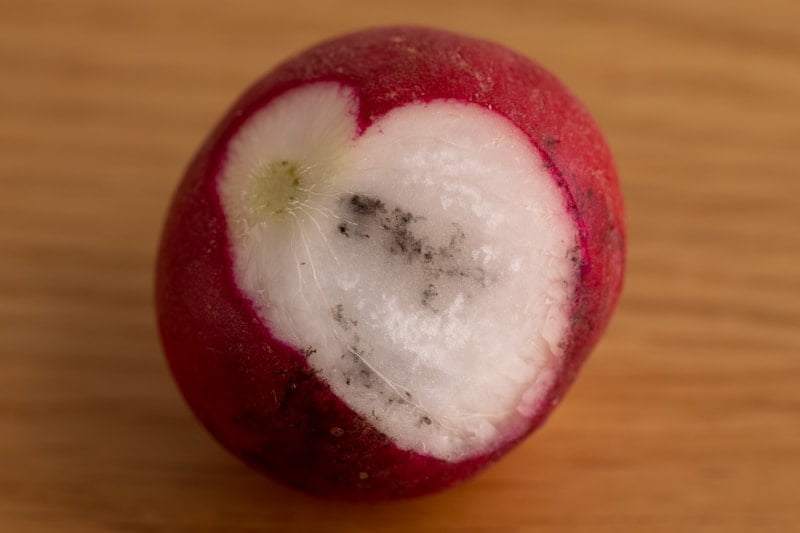
Taste
When it comes to radishes, their distinct flavor profile can tell you a lot about their freshness and quality. A good radish should have a pungent taste, which adds a delightful zing to your dishes. However, if you experience an overwhelming bitterness when you bite into a radish, it’s a sign that it may have passed its prime.
Pungent Flavor
A fresh radish boasts a distinct and crisp flavor, with a slightly spicy kick. This pungent taste is what sets radishes apart and makes them a favorite choice for adding a burst of flavor to various dishes. The intensity of their flavor should be invigorating and enjoyable, pleasing your taste buds with every bite.
Bitterness
While radishes naturally have a slightly bitter taste due to their high concentration of glucosinolates, an overwhelming bitterness could indicate a decline in quality. The bitterness might become more pronounced as the radish ages, making it less appetizing. If you find the bitterness unbearable or overpowering, it’s a sign that the radish may no longer be at its best and might be better off left unused.
Color
The color of radishes, both on the outside and inside, can provide valuable insight into their freshness and overall condition. By paying attention to their color, you can quickly assess whether they are still good to consume or if they have deteriorated.
Vibrant Red
Fresh and high-quality radishes are typically vibrant red in color. This rich hue signifies that the radish is at its peak freshness and ready to be enjoyed. When you come across radishes with a lively and deep red shade, it’s a visual confirmation that they are in their prime. Such radishes are not only appealing to the eye but also deliver a delightful taste.
Discoloration
However, if you notice any discoloration in the radishes, it could be an indication that they are no longer fresh. Discoloration can manifest as brown spots, patches, or a general dullness in their appearance. These changes in color usually occur as the radishes age or suffer from damage and can be a sign of decay. It’s best to avoid radishes with significant discoloration, as they may not retain their desired taste and texture.
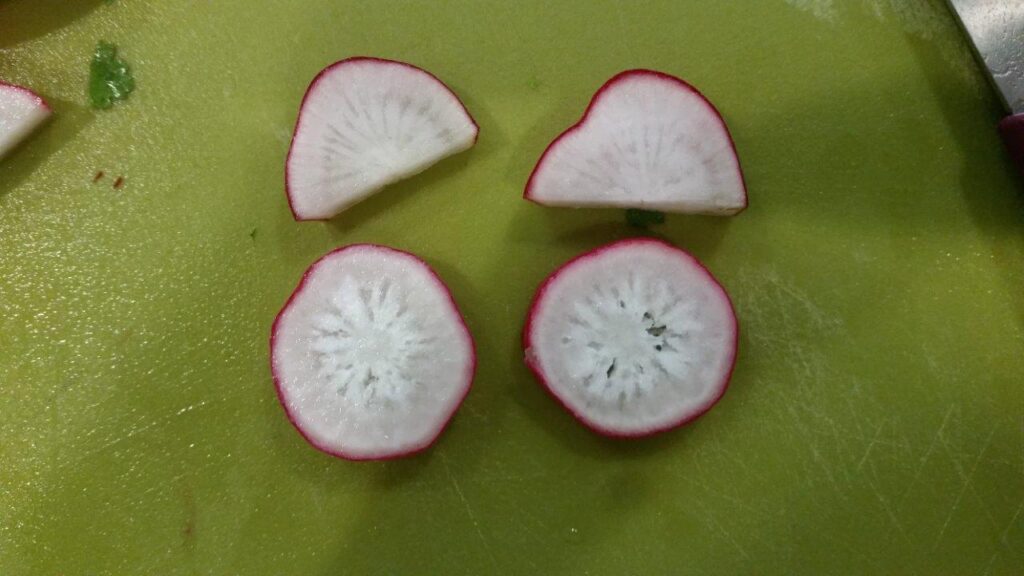
Size
The size of radishes can vary, and it’s not always an indication of their quality. However, it’s essential to evaluate the consistency of their size and watch out for overgrown radishes.
Consistency
When inspecting radishes, pay attention to the consistency of their size within a bunch or package. Ideally, the radishes should be uniform in size, which indicates that they were harvested around the same time. Unanimity in size often translates to consistent taste and texture, making them easier to cook or incorporate into dishes where visual appeal matters.
Overgrown Radishes
Keep an eye out for radishes that have grown significantly larger than the typical size. Overgrown radishes can be tougher, woodier, and not as enjoyable to eat. They may lack the desired crunchiness and fresh flavor that smaller radishes offer. While their taste might not be significantly affected, overgrown radishes may not be as pleasant to consume due to their more substantial texture.
Condition of Leaves
The condition of the leaves attached to the radish can provide essential clues about their freshness and overall quality. By examining the state of the leaves, you can gain insights into the radish’s health and longevity.
Fresh and Crisp
Fresh radishes typically have crisp, vibrant green leaves attached to them. These leaves indicate that the radish is still in good condition and was recently harvested. Fresh leaves are a positive sign that the radish is likely to have retained its flavor and crispness. If the leaves appear lively and not wilted, it’s a good indicator that the radishes are of high quality.
Wilted or Yellowing Leaves
On the other hand, if the leaves are wilted, yellowing, or show signs of decay, it’s a sign that the radish is past its prime. Wilting leaves may suggest that the radishes have been sitting for a while and may not be as fresh or flavorful. While you can still enjoy the radishes themselves, the overall quality might be compromised. When buying radishes, make sure to choose those with healthy and crisp leaves for the best culinary experience.
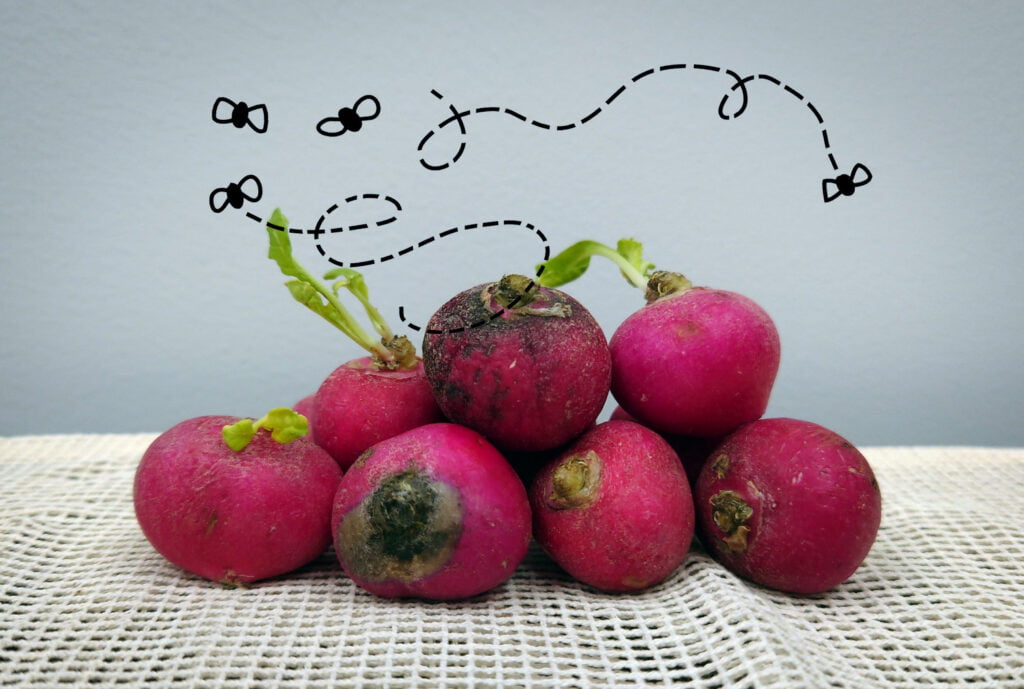
Storage
Proper storage plays a vital role in preserving the freshness and quality of radishes. Understanding how to handle and store radishes can help prolong their shelf life and ensure you enjoy them at their best.
Expiration Date
When purchasing radishes, check if there is an expiration date provided on the packaging. This date serves as a guideline for the freshness and quality of the radishes. It’s important to consume the radishes before this date to ensure optimal taste and texture. However, keep in mind that the expiration date is just a general recommendation, and the actual quality might vary depending on the specific conditions in which the radishes were stored.
Mold Growth
One of the primary concerns when it comes to storing radishes is the potential growth of mold. Mold can quickly develop when radishes are exposed to moisture or stored in unfavorable conditions. Inspect your radishes for any visible signs of mold, such as fuzzy patches or an unpleasant smell. If you notice any mold growth, it’s best to discard the affected radishes, as mold can lead to potential health risks.
Age
Determining the age of radishes is another aspect that can help you determine their freshness and quality. By considering how recently the radishes were harvested, you can gauge their taste, texture, and overall appeal.
Newly Harvested
Freshly harvested radishes, also known as “baby radishes,” are generally preferred for their tender texture and milder taste. These radishes have been recently plucked from the ground and are at their peak freshness. Young radishes typically have a more delicate and less spicy flavor compared to their more mature counterparts.
Old or Shriveled
On the other hand, radishes that have been sitting for an extended period may start to lose their moisture and become shriveled or wrinkled. These older radishes can develop a stronger, more peppery taste and may not be as enjoyable to eat. The texture might be tougher and less crisp compared to fresher radishes. While they might still be safe to consume, the overall quality and taste might be compromised.
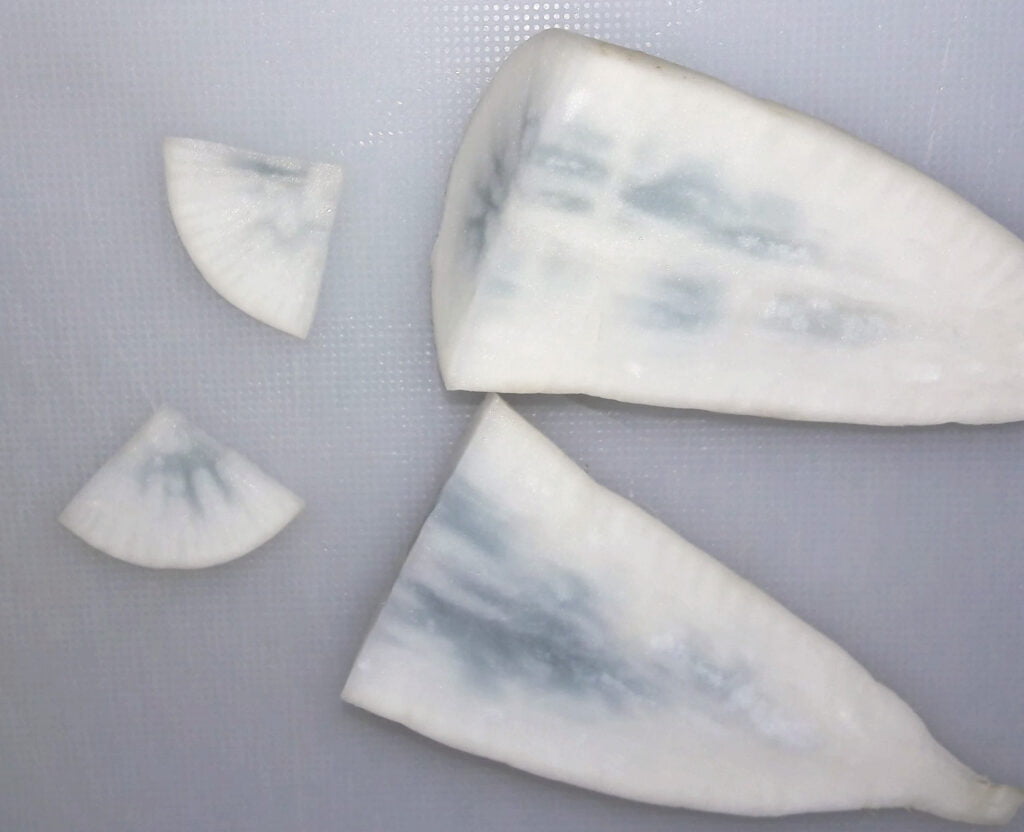
Organic vs. Conventionally Grown
When selecting radishes, you might come across both organic and conventionally grown options. Understanding the differences between the two can help inform your purchasing decisions.
Pesticide Residue
One significant factor to consider when choosing radishes is the potential presence of pesticide residue. Radishes that are conventionally grown often undergo pesticide treatments to prevent pests and diseases. These pesticides can leave behind residue, which some individuals prefer to avoid. On the other hand, organic radishes are grown without synthetic pesticides, which may make them a preferred choice for those seeking a pesticide-free option.
Packaging
In terms of packaging, there might also be differences between organic and conventionally grown radishes. Organic radishes are typically labeled as such and packed separately, clearly indicating their organic certification. Conventionally grown radishes may be packaged alongside other produce without specific differentiation. If the sourcing and production methods are of importance to you, paying attention to the packaging can help ensure you make an informed choice.
Preparation
Once you’ve determined that your radishes are fresh and of good quality, it’s important to prepare them properly to fully enjoy their crispness and flavor.
Washing
Before consuming radishes, it’s essential to wash them thoroughly to remove any dirt or residues. Start by rinsing them under cold water and gently scrubbing the surface using a vegetable brush. This will help remove any dirt or debris from the skin. Be sure to pay extra attention to the area where the leaves attach to the radish, as dirt can often accumulate there. Once washed, pat them dry using a clean kitchen towel or paper towels before using or storing them.
Removing Stems
To enhance the presentation and texture of your radishes, it’s common to remove the stems before use. Simply cut off the stems near the top of the radish, leaving a small amount of the stem attached for aesthetic purposes if desired. Removing the stems not only improves the appearance of the radishes but also makes it easier to handle and prepare them for various recipes.
By following these guidelines for inspecting and evaluating your radishes based on appearance, smell, taste, color, size, condition of leaves, storage, age, and type of cultivation, you can confidently select the best radishes for your culinary endeavors. With fresh and high-quality radishes, you’ll be able to add a delightful crunch and peppery kick to your salads, sandwiches, and other dishes.
